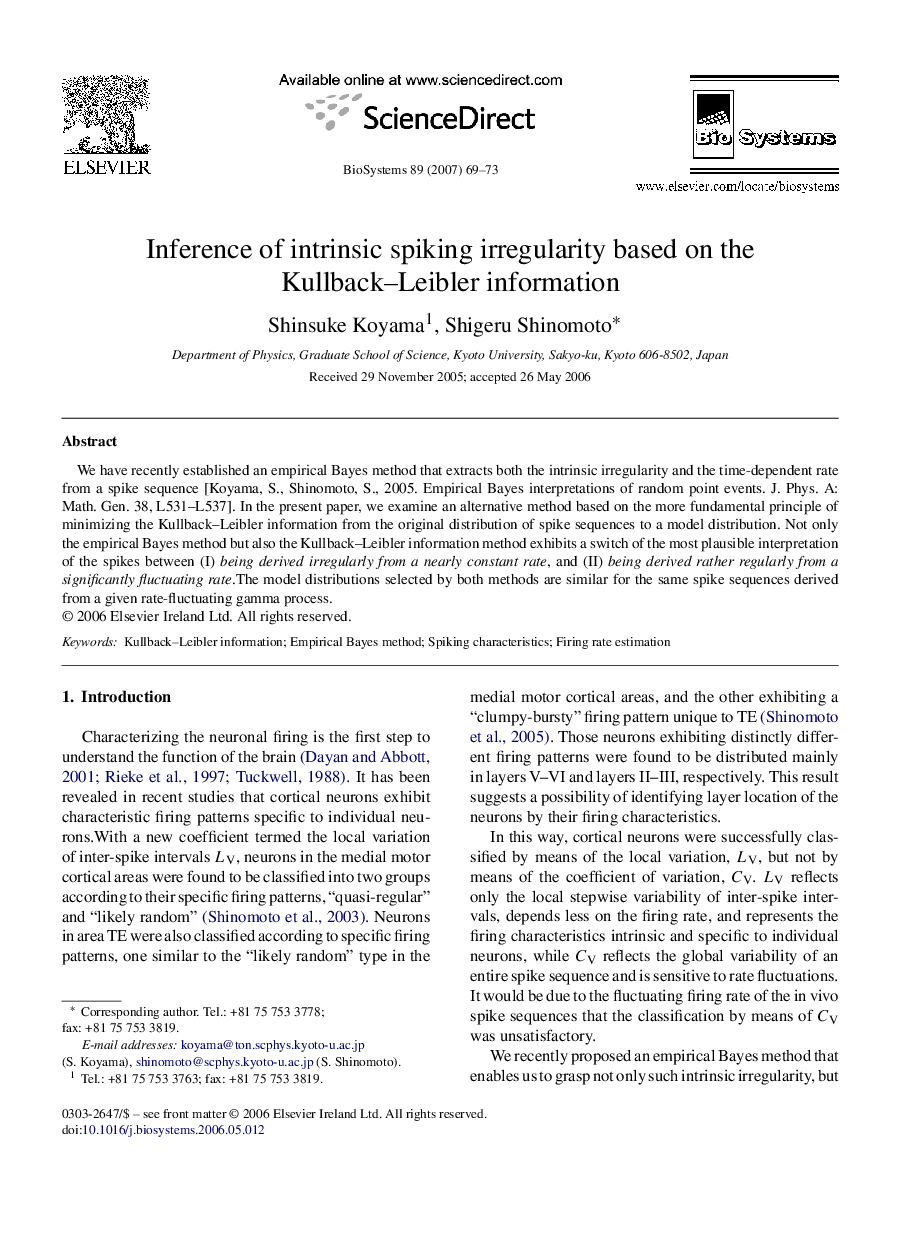| Article ID | Journal | Published Year | Pages | File Type |
|---|---|---|---|---|
| 2077142 | Biosystems | 2007 | 5 Pages |
Abstract
We have recently established an empirical Bayes method that extracts both the intrinsic irregularity and the time-dependent rate from a spike sequence [Koyama, S., Shinomoto, S., 2005. Empirical Bayes interpretations of random point events. J. Phys. A: Math. Gen. 38, L531-L537]. In the present paper, we examine an alternative method based on the more fundamental principle of minimizing the Kullback-Leibler information from the original distribution of spike sequences to a model distribution. Not only the empirical Bayes method but also the Kullback-Leibler information method exhibits a switch of the most plausible interpretation of the spikes between (I) being derived irregularly from a nearly constant rate, and (II) being derived rather regularly from a significantly fluctuating rate.The model distributions selected by both methods are similar for the same spike sequences derived from a given rate-fluctuating gamma process.
Related Topics
Physical Sciences and Engineering
Mathematics
Modelling and Simulation
Authors
Shinsuke Koyama, Shigeru Shinomoto,
